-
 Bitcoin
Bitcoin $106,754.6083
1.33% -
 Ethereum
Ethereum $2,625.8249
3.80% -
 Tether USDt
Tether USDt $1.0001
-0.03% -
 XRP
XRP $2.1891
1.67% -
 BNB
BNB $654.5220
0.66% -
 Solana
Solana $156.9428
7.28% -
 USDC
USDC $0.9998
0.00% -
 Dogecoin
Dogecoin $0.1780
1.14% -
 TRON
TRON $0.2706
-0.16% -
 Cardano
Cardano $0.6470
2.77% -
 Hyperliquid
Hyperliquid $44.6467
10.24% -
 Sui
Sui $3.1128
3.86% -
 Bitcoin Cash
Bitcoin Cash $455.7646
3.00% -
 Chainlink
Chainlink $13.6858
4.08% -
 UNUS SED LEO
UNUS SED LEO $9.2682
0.21% -
 Avalanche
Avalanche $19.7433
3.79% -
 Stellar
Stellar $0.2616
1.64% -
 Toncoin
Toncoin $3.0222
2.19% -
 Shiba Inu
Shiba Inu $0.0...01220
1.49% -
 Hedera
Hedera $0.1580
2.75% -
 Litecoin
Litecoin $87.4964
2.29% -
 Polkadot
Polkadot $3.8958
3.05% -
 Ethena USDe
Ethena USDe $1.0000
-0.04% -
 Monero
Monero $317.2263
0.26% -
 Bitget Token
Bitget Token $4.5985
1.68% -
 Dai
Dai $0.9999
0.00% -
 Pepe
Pepe $0.0...01140
2.44% -
 Uniswap
Uniswap $7.6065
5.29% -
 Pi
Pi $0.6042
-2.00% -
 Aave
Aave $289.6343
6.02%
Is it necessary to pull back after the upper track of the channel indicator is blocked three times? How to quantify it?
When the price hits the upper channel three times without breaking through, it often signals strong resistance and potential pullback, especially if confirmed by volume spikes or bearish candlestick patterns.
Jun 16, 2025 at 09:49 am
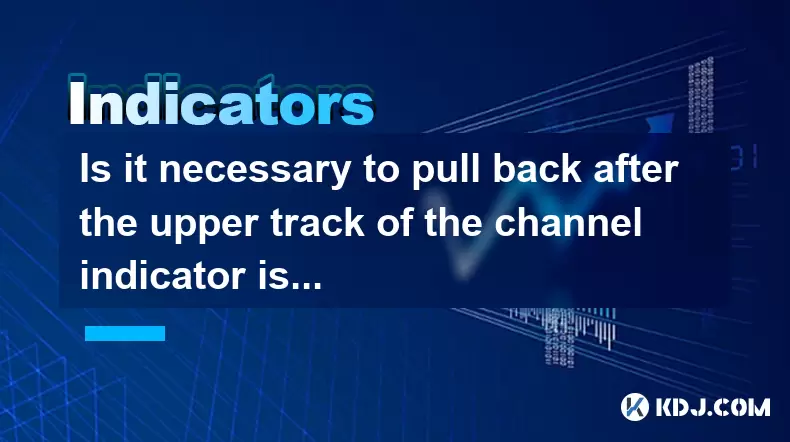
Understanding the Channel Indicator and Its Significance
The channel indicator is a popular technical analysis tool used in cryptocurrency trading to identify price trends and potential reversal points. It consists of three lines: an upper band, a middle line (usually a simple moving average), and a lower band. These bands are typically set two standard deviations away from the middle line, forming a dynamic range within which prices tend to oscillate.
When the price reaches or touches the upper track multiple times, it signals overbottened conditions. In many cases, traders interpret this as a sign that the uptrend may be losing momentum. However, simply touching the upper boundary once or twice doesn't necessarily indicate a reversal. The real signal comes when the price hits the upper band three times without breaking through decisively.
What Does It Mean When the Upper Track Is Blocked Three Times?
In crypto markets, where volatility is high and price action can be erratic, repeated touches of the upper channel line suggest resistance at that level. Each touch tests the strength of that resistance. By the third time, if the price fails to break through, it often indicates that selling pressure is increasing, and buyers are unable to push the price higher.
This phenomenon is especially significant when observed on higher timeframes like the 4-hour or daily chart. Traders look for confirmation before making decisions—such as bearish candlestick patterns, volume spikes, or divergence in oscillators like RSI or MACD.
How to Quantify the Third Touch Signal
Quantifying whether a pullback is necessary after three failed attempts at breaking the upper track involves several measurable factors:
- Price Behavior at Resistance: Look at how the price reacts each time it reaches the upper band. If each subsequent touch results in a stronger rejection (like long upper wicks), it reinforces the idea that resistance is firm.
- Volume Analysis: A decrease in volume during the third touch compared to the first two suggests weakening buying interest. Conversely, a spike in volume on the third touch could mean strong selling pressure entering the market.
- Oscillator Divergence: Tools like RSI or Stochastic can help quantify momentum. If the price makes a new high near the upper band but the oscillator does not, this bearish divergence strengthens the case for a pullback.
- Candlestick Patterns: Bearish formations such as shooting stars, hanging men, or engulfing candles at the upper band increase the probability of a reversal.
Each of these elements provides a quantifiable metric that traders can use to assess the likelihood of a pullback after the third failed attempt.
Practical Steps to Analyze the Situation
To determine whether a pullback is likely after the upper channel is blocked three times, follow these steps:
- Identify the channel clearly using a reliable indicator such as Bollinger Bands or Donchian Channels.
- Mark the points where the price touched the upper boundary.
- Examine the candlestick behavior at each touch point—look for signs of rejection.
- Compare volume levels across all three touches.
- Check for divergence between price and momentum indicators.
- Observe support levels below the current price to estimate the possible depth of the pullback.
By systematically analyzing these aspects, traders can make more informed decisions about whether to expect a pullback or anticipate a breakout.
Real Market Examples and Observations
Take, for instance, Bitcoin's price movement in early 2024. On the daily chart, BTC/USDT approached the upper Bollinger Band three times within a month. Each time, the price was rejected with increasing strength. During the third touch, a bearish engulfing pattern formed with high volume, signaling strong selling pressure. Shortly afterward, the price dropped nearly 15% over the next week.
Another example is Ethereum during a consolidation phase in late 2023. After hitting the upper channel line three times, the price formed a series of doji candles, indicating indecision. Volume also declined significantly by the third touch. This led to a sharp correction toward the middle band of the channel.
These examples show that while the third touch alone isn’t a guaranteed signal, combining it with other technical tools improves its reliability.
Common Misinterpretations and How to Avoid Them
One common mistake among novice traders is treating every third touch as a sell signal. Markets don't always react predictably, and sometimes the price consolidates sideways rather than pulling back. Additionally, false breakouts above the upper band can occur, misleading traders into premature short positions.
To avoid misinterpretation:
- Do not act solely based on price touching the upper band three times.
- Always cross-check with volume and momentum indicators.
- Consider broader market context, including news events or macroeconomic data.
- Use stop-loss orders to manage risk effectively.
By applying a holistic approach, traders can reduce the chances of acting on false signals.
Frequently Asked Questions
Q: Can the third touch of the upper band ever lead to a breakout instead of a pullback?
Yes, depending on the strength of the trend and sudden influx of buying pressure, the price can break out above the channel after three touches. This usually happens when strong bullish news or market sentiment emerges.
Q: What timeframe gives the most reliable signals for this pattern?
Higher timeframes like the 4-hour and daily charts offer more reliable readings. Lower timeframes may produce too much noise, leading to false signals.
Q: Should I wait for the price to close below the middle line before confirming a pullback?
Many traders use the middle line as a confirmation zone. A close below it increases the probability of a deeper pullback, but some traders prefer acting earlier based on candlestick and volume cues.
Q: Are there specific cryptocurrencies where this pattern works better?
This pattern applies broadly across major cryptocurrencies like Bitcoin, Ethereum, and Litecoin. However, less liquid altcoins may exhibit erratic behavior, reducing the effectiveness of traditional technical patterns.
Disclaimer:info@kdj.com
The information provided is not trading advice. kdj.com does not assume any responsibility for any investments made based on the information provided in this article. Cryptocurrencies are highly volatile and it is highly recommended that you invest with caution after thorough research!
If you believe that the content used on this website infringes your copyright, please contact us immediately (info@kdj.com) and we will delete it promptly.
- 2025-W Uncirculated American Gold Eagle and Dr. Vera Rubin Quarter Mark New Products
- 2025-06-13 06:25:13
- Ruvi AI (RVU) Leverages Blockchain and Artificial Intelligence to Disrupt Marketing, Entertainment, and Finance
- 2025-06-13 07:05:12
- H100 Group AB Raises 101 Million SEK (Approximately $10.6 Million) to Bolster Bitcoin Reserves
- 2025-06-13 06:25:13
- Galaxy Digital CEO Mike Novogratz Says Bitcoin Will Replace Gold and Go to $1,000,000
- 2025-06-13 06:45:13
- Trust Wallet Token (TWT) Price Drops 5.7% as RWA Integration Plans Ignite Excitement
- 2025-06-13 06:45:13
- Ethereum (ETH) Is in the Second Phase of a Three-Stage Market Cycle
- 2025-06-13 07:25:13
Related knowledge

How to confirm the effectiveness of the average price line support in the time-sharing chart?
Jun 17,2025 at 12:56am
Understanding the Time-Sharing Chart and Its RelevanceIn cryptocurrency trading, time-sharing charts play a crucial role in analyzing short-term price movements. These charts typically display price fluctuations over a specific period, often ranging from minutes to hours. Traders rely on them to make quick decisions based on real-time data. The average ...

What does it mean when the momentum indicator breaks above the zero axis?
Jun 17,2025 at 12:43am
Understanding the Momentum IndicatorThe momentum indicator is a technical analysis tool used to measure the speed or velocity of price movements in cryptocurrency markets. It helps traders identify potential trend reversals, overbought or oversold conditions, and confirms existing trends. The indicator typically oscillates around a zero line, with value...
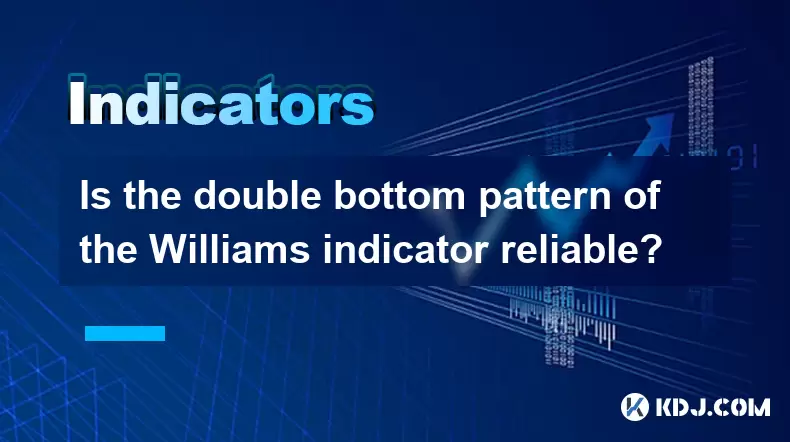
Is the double bottom pattern of the Williams indicator reliable?
Jun 17,2025 at 03:56am
Understanding the Williams Indicator and Its SignificanceThe Williams %R indicator, often referred to as Williams Percent Range, is a momentum oscillator used in technical analysis to identify overbought or oversold conditions in the market. Developed by Larry Williams, this indicator fluctuates between 0 and -100, with readings above -20 indicating ove...
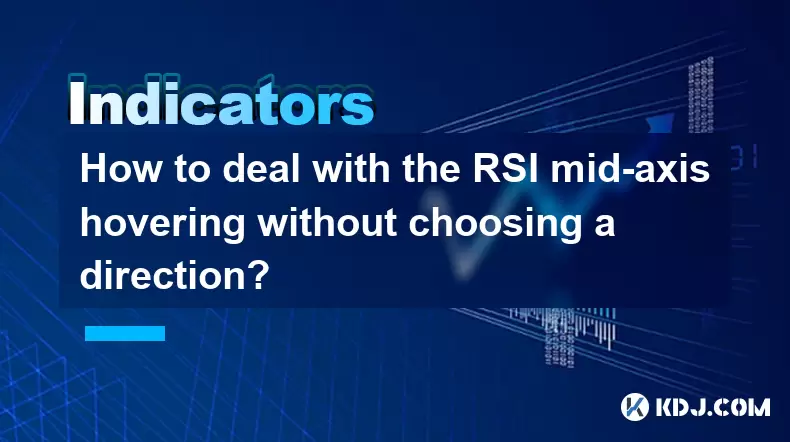
How to deal with the RSI mid-axis hovering without choosing a direction?
Jun 17,2025 at 02:02am
Understanding RSI Mid-Axis Hovering in Cryptocurrency TradingThe Relative Strength Index (RSI) is a popular momentum oscillator used by traders to assess whether an asset is overbought or oversold. In cryptocurrency markets, it's common for the RSI to hover around its mid-axis, typically at the 50 level, without showing a clear upward or downward trend....
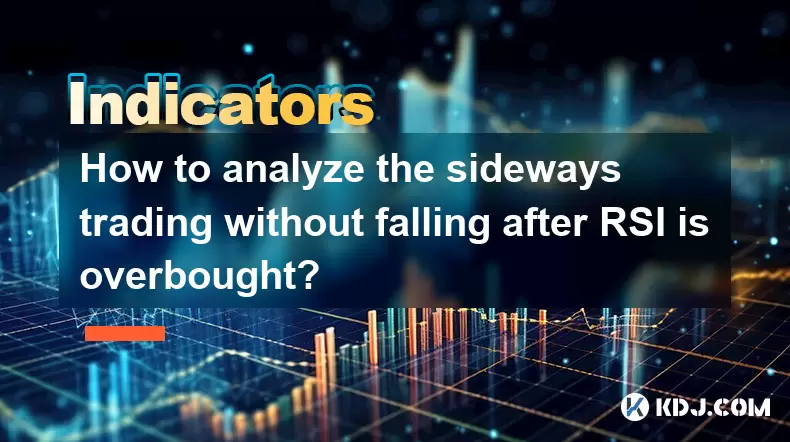
How to analyze the sideways trading without falling after RSI is overbought?
Jun 17,2025 at 04:14am
Understanding RSI and Its Role in Cryptocurrency TradingThe Relative Strength Index (RSI) is a momentum oscillator used to measure the speed and change of price movements. In the context of cryptocurrency trading, it helps traders identify potential overbought or oversold conditions. When the RSI exceeds 70, it typically signals that an asset may be ove...
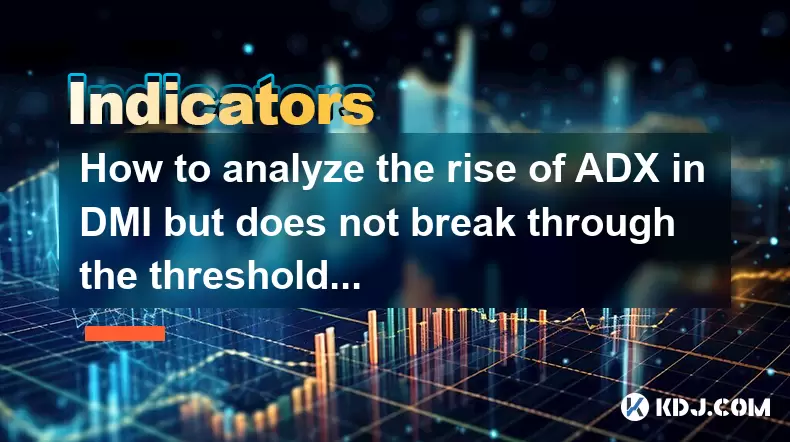
How to analyze the rise of ADX in DMI but does not break through the threshold?
Jun 16,2025 at 11:49pm
Understanding ADX and DMI in Cryptocurrency TradingIn cryptocurrency trading, ADX (Average Directional Index) is a technical indicator used to measure the strength of a trend. It works in conjunction with the DMI (Directional Movement Indicator), which includes two components: +DI (Positive Directional Indicator) and -DI (Negative Directional Indicator)...

How to confirm the effectiveness of the average price line support in the time-sharing chart?
Jun 17,2025 at 12:56am
Understanding the Time-Sharing Chart and Its RelevanceIn cryptocurrency trading, time-sharing charts play a crucial role in analyzing short-term price movements. These charts typically display price fluctuations over a specific period, often ranging from minutes to hours. Traders rely on them to make quick decisions based on real-time data. The average ...

What does it mean when the momentum indicator breaks above the zero axis?
Jun 17,2025 at 12:43am
Understanding the Momentum IndicatorThe momentum indicator is a technical analysis tool used to measure the speed or velocity of price movements in cryptocurrency markets. It helps traders identify potential trend reversals, overbought or oversold conditions, and confirms existing trends. The indicator typically oscillates around a zero line, with value...

Is the double bottom pattern of the Williams indicator reliable?
Jun 17,2025 at 03:56am
Understanding the Williams Indicator and Its SignificanceThe Williams %R indicator, often referred to as Williams Percent Range, is a momentum oscillator used in technical analysis to identify overbought or oversold conditions in the market. Developed by Larry Williams, this indicator fluctuates between 0 and -100, with readings above -20 indicating ove...

How to deal with the RSI mid-axis hovering without choosing a direction?
Jun 17,2025 at 02:02am
Understanding RSI Mid-Axis Hovering in Cryptocurrency TradingThe Relative Strength Index (RSI) is a popular momentum oscillator used by traders to assess whether an asset is overbought or oversold. In cryptocurrency markets, it's common for the RSI to hover around its mid-axis, typically at the 50 level, without showing a clear upward or downward trend....

How to analyze the sideways trading without falling after RSI is overbought?
Jun 17,2025 at 04:14am
Understanding RSI and Its Role in Cryptocurrency TradingThe Relative Strength Index (RSI) is a momentum oscillator used to measure the speed and change of price movements. In the context of cryptocurrency trading, it helps traders identify potential overbought or oversold conditions. When the RSI exceeds 70, it typically signals that an asset may be ove...

How to analyze the rise of ADX in DMI but does not break through the threshold?
Jun 16,2025 at 11:49pm
Understanding ADX and DMI in Cryptocurrency TradingIn cryptocurrency trading, ADX (Average Directional Index) is a technical indicator used to measure the strength of a trend. It works in conjunction with the DMI (Directional Movement Indicator), which includes two components: +DI (Positive Directional Indicator) and -DI (Negative Directional Indicator)...
See all articles

























































































